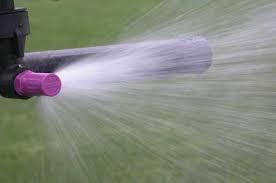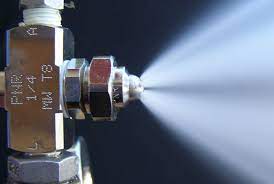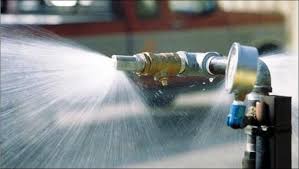Calibrating a knapsack or compression sprayer is a straightforward task requiring minimal time. A sprayer equipped with a pressure gauge is preferable, as it ensures consistent output. Key considerations before calibration include:
- The sprayer must be clean, serviced, and functioning per manufacturer’s instructions.
- Only water is used for calibration, never chemicals.
- Calibration accuracy depends on maintaining constant pressure through pumping and walking at a steady pace. A pressure gauge aids this process; without one, a comfortable, constant pumping rate is necessary.
Each sprayer varies in capacity, nozzle output, operator speed, and pressure, making calibration essential.
Read Also: How to Extract and Package Snail Slime (Snail filtrate) for Commercial Use
Terminologies for Sprayer Calibration in Agriculture

1. Coverage for Spray Efficacy: More droplets per unit area enhance spray effectiveness.
2. Dosage for Pest Control: The pesticide quantity needed for desired pest control (below economic threshold), with lower doses ineffective and higher doses wasteful.
3. Dosage Rate for Specific Applications: Recommended pesticide rate for a soil type, pest, and crop, expressed in mass (kg) or volume (liters) per hectare (10,000 m²).
4. Pre-Harvest Interval (PHI) for Safety: Minimum time between the last spray and harvest.
5. Flow Rate for Nozzle Output: Rate of spray liquid emission through the nozzle, in milliliters per second (ml/sec) or liters per minute.
6. Application or Dilution Rate for Spray Mixtures: Volume of spray mixture (liters of water or diluent) applied per fixed area, varying (e.g., 150–300 liters/hectare).
7. Swath Width for Spray Coverage: Width of spray from a nozzle at a given angle, expressed in meters.
Read Also: The Health Benefits of Using Accent Seasoning on your Cooking
Procedure for Calibrating Old or New Sprayers

Three measurements are collected during calibration:
- Operator walking speed (kilometers per hour, Kph).
- Sprayer output per minute (liters).
- Swath width per pass (meters).
1. Steps for Calibration Process
i. Wear protective clothing.
ii. Assemble the knapsack correctly and half-fill with water for calibration.
2. Assess Operator Walking Speed:
i. measure a 100-meter distance.
ii. with the knapsack on, pump steadily, walk at a consistent pace, spray at knee height, and recite “one thousand” per pump stroke.
iii. time the walk in seconds, averaging two 100-meter passes.
iv. formula: 360 ÷ time (seconds) to travel 100 meters = Kph.
3. Measure Sprayer Output:
i. with the knapsack pressurized, release the trigger, hold the nozzle into a metric calibrated vessel, and time for one minute.
ii. record the water sprayed in liters.
iii. for multi-nozzle sprayers (e.g., trolley sprayers), multiply single-nozzle output by the number of nozzles.
4. Establish Swath Width:
i. on dry tarmac, pressurize the sprayer, walk at the measured speed, hold the nozzle at knee height, and spray for 10 strides.
ii. measure the wet spray footprint width before it dries.
5. Identify Nozzle Type:
i. cone nozzle: commonly used for fungicides and insecticides.
ii. flat fan nozzle: general-purpose and spray booms.
iii. deflector (anvil) nozzle: for herbicides.
Calculating Overall Sprayer Output per Hectare
Formula: (600 × sprayer output in liters) ÷ (operator speed in Kph × swath width in meters) = total output in liters per hectare (L/ha spray volume).
The spray volume combines chemical and water.
For example, 5 liters of chemical per hectare in a minimum of 200 liters of water per hectare equals 5 liters of chemical plus 195 liters of water for a total of 200 liters of spray volume per hectare.
Advantages of Sprayer Calibration in Agriculture
i. prevents pesticide wastage.
ii. protects the environment.
iii. facilitates spray planning.
iv. enhances pest control efficiency.
Disadvantages of Sprayer Calibration
i. time-consuming, requiring calibration for each new or old sprayer.
ii. demands some literacy level.
iii. susceptible to errors, potentially costly.
Best Practices for Sprayer Use
Before applying herbicides, read the label for the dosage rate per hectare to avoid under-dosage. Maintain a constant walking speed, typically one meter per second. Calibrate both old and new sprayers before use.
Do you have any questions, suggestions, or contributions? If so, please feel free to use the comment box below to share your thoughts. We also encourage you to kindly share this information with others who might benefit from it. Since we can’t reach everyone at once, we truly appreciate your help in spreading the word. Thank you so much for your support and for sharing!

